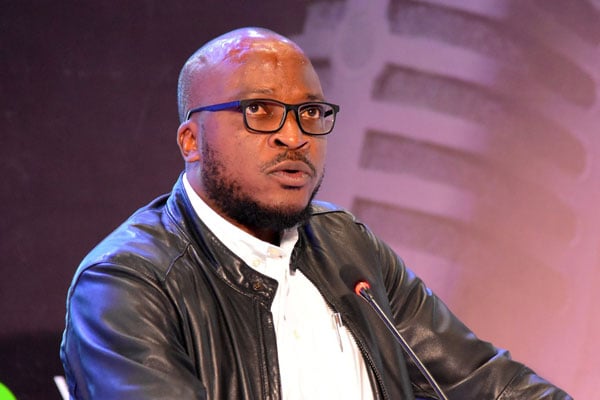Prime
Pursuit of Lugbara chiefdom is justifiable

Lugbara perform a traditional at a function in West Nile recently. PHOTO BY MONITOR REPORTER
Harold Acemah’s piece in the Sunday Monitor of June 23, “Quest for Lugbara chiefdom is nothing but a selfish venture” is, with due respect, dismissive, inaccurate, polemical and not in the best interest of the Lugbara. It plays into the hands of those who regard Lugbara as unorganised, and without a history of control and cohesiveness. Acemah’s thesis is that the Lugbara did not have chiefdoms and believed that “men were created equal, clan heads were chosen on merit, and were not hereditary… and the Lugbara were egalitarian and republican”.
Actually, the Lugbara nation, though highly decentralised, was cohesive and unified. Central authority was exercised only in times of national crises, especially in wars, famine and epidemics. The smallest political unit was the chieflet, with complete institutions for governing politics, economy, trade, religion, law, army and foreign relationship; all the components of a state. Depending on the nature and extent of an issue, chieflets got together under a paramount chief.
John Middleton has indeed written widely about the Lugbara, but dwells on Lugbara anthropology not her political organisation and statehood. These latter topics have been written elsewhere and especially vividly by historian O.J.E Shiroya in a chapter “Lugbara States in 18th and 19th centuries” in the book State Formation in Eastern Africa.
The Lugbara state formation occurred between 1500 and 1700. Before 1500 there was no Lugbara. Lugbara was a created through the cultural and blood mixing through intermarriages between four different ethnic groups: Madi, Bari, Luo and Kebu/Ndu. The Madi group was dominant both in number and language. So Madi language and culture as a whole was modified through cultural transformation, giving rise to a new culture, nation and language group called Lugbara.
The Lugbara consisting of formerly different ethnic groups became a distinct entity “with common ideas, in politics, and in social philosophies”. At the turn of 18th century, secondary migrations begun from the cradle land southwards and westwards into what is now DR Congo. Some Lugbara clans moved into Logiri and DR Congo. They settled among and intermarried with the Kebu and Ndu, and assimilated these tribes into the Lugbara culture.
Lugbaraization
Historians call the period 1770 - 1850 “the Lugbaraization period”, the period of expansion of Lugbara culture, language and influence. Outlying clans such as Aupi, Yiba and Otumbari became Lugbaraized. The Lugbara culture penetrated Bari communities without the Lugbara actually moving there, for example the Ludara of Koboko. Formerly Bari speaking clans such as Lormujo, Leiko, Leba, Riaba, Kerikula, Reli and Ingili all became Lugbaraized.
The basic political unit in the Lugbara nation was a chieflet led by a chief or Opi or Atalao. A chief was advised by Ojoo on war, famine and epidemics. Ojoo was also a high priest, physician, foreteller and diviner. In parts of Lugbara, paramount chiefs existed, and ruled over several chieflets who submitted to him. In Maraca the paramount chief was called Opi Ozooni, because he was also a rain-maker. In Aringa all chiefs were rain-makers. Opi’s were hereditary and for life. Opi was succeeded by the first son of the first wife. Where this was not possible, elders selected one son to be the chief.
There was no standing army in the Lugbara nation, even at the chieflet level. But an army was always mobilised in times of need. The army was led by a military commander or war captain called Keigo or Ambo. This was not an appointive position but came automatically to a warrior who distinguished himself. Chiefdoms cooperated and held “mock wars” to keep soldiers fit. War was controlled by a paramount chief, who also settled disputes among chieflets.
The Lugbara’s Kari or Chiefdom, renamed during the colonial period was an expansion and modification of the basic Lugbara social and political organisation. It was not a new creation. While Lugbara ancestors organised chiefs and paramount chiefs to solve specific problems as such as famines, today the Lugbara are faced with new but perpetual challenges of disunity, lack of cohesion and loss of cultural heritage, and of adjusting our culture to science and technology. For this reason, to restore the Lugbara Kari is justified so as to bring about unity, to foster ethnic identity, to protect our cultural heritage and to develop and codify Lugbara language for advanced education, science and technology. These cannot be achieved by the central or local governments.
While the way the current cultural leaders have been chosen in their respective positions has not been transparent, in principle, it is the right way to go. To give credibility to the whole process, Lugbara elders from the entire Lugbara land, including from DR Congo, must get together to select persons who have distinguished themselves in the service of the Lugbara people and have the capacity to achieve the goals outlined above. I call upon all Lugbara to join hands to restore our cultural organisation.
Mr Okuonzi is the Member of Parliament for Vurra County, Arua District




